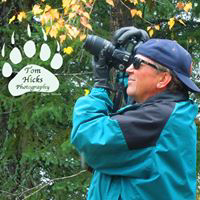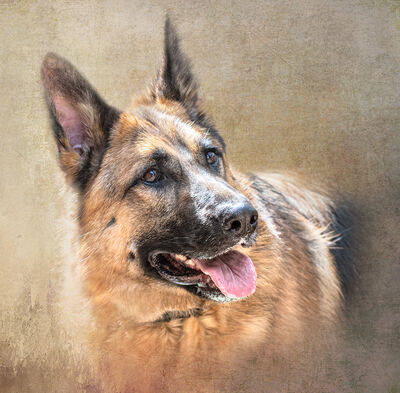Basics of Lightroom Sharpening
Sep 6, 2019 09:24:28 #
srt101fan wrote:
Many thanks Paul. I'm an Affinity learner, but there is much here of value to our tribe as well as the Lightroom users! 

Ditto
Sep 6, 2019 09:25:38 #
DaveJ wrote:
Thank You for this post and the work that went into it. What great timing for me. Just yesterday morning I decided to "splurge" for an early b-day present to myself with a subscription to Lightroom/Photoshop. I have been using Elements for 14 months so Lightroom is kind of new to me ( but somewhat familiar as similar controls but many more). So if you decide to post any more Lightroom or Photoshop hints and lessons, please do! Did you recently change to the newer LR version from LR6?
See videos by Anthony Morganti and the "official" Adobe Photoshop Lightroom channel, both on u-tube. I link this one a lot too for the Export dialog: Recommended resizing parameters for digital images
Sep 6, 2019 09:38:53 #
Heather Iles
Loc: UK, Somerset
CHG_CANON wrote:
Thank you AFPhoto, Heather! I personally don't post a tutorial nor even images on a daily basis here at UHH, so you're not missing anything from me.  Glad you found the few posts like this one useful.
Glad you found the few posts like this one useful.
 Glad you found the few posts like this one useful.
Glad you found the few posts like this one useful.Thanks for your response and explanation.
Sep 6, 2019 09:44:32 #
Thank you so much, Paul!!! I'm very inexperienced in Lightroom and Photoshop, so this information is very helpful! Thank you for taking the time to share this. I recently discovered using the alt key with the masking slider, and really like the ability to only apply sharpening to the finer parts of the image. Thanks again, for this very helpful information!
Patty
Patty
Sep 6, 2019 09:48:53 #
wds0410
Loc: Nunya
As Oliver Twist said: "Please Sir, can I have some more?"
This is one of the most useful topics I've seen on this site.

This is one of the most useful topics I've seen on this site.


Sep 6, 2019 10:03:44 #
DaveJ wrote:
Thank You for this post and the work that went into it. What great timing for me. Just yesterday morning I decided to "splurge" for an early b-day present to myself with a subscription to Lightroom/Photoshop. I have been using Elements for 14 months so Lightroom is kind of new to me ( but somewhat familiar as similar controls but many more). So if you decide to post any more Lightroom or Photoshop hints and lessons, please do! Did you recently change to the newer LR version from LR6?
Happy birthday Dave. Today is mine too.
Sep 6, 2019 10:55:48 #
DaveJ
Loc: NE Missouri
CHG_CANON wrote:
Thank you Don, Dave, Steven! I'm holding out on the subscription just as I'm holding out on upgrading my cameras, that for me, would be the only reason to change my RAW processing software. All of annotations of these screen captures were done with PSE-10. I don't buy into the need for new software that doesn't add anything I don't already have ... 

Paul, I have read you saying that quite often, and for the most part agree 100%. When you started this post with LR 6 and Lightroom classic comparisons(What my new yesterday version of LR is called) on presets, I thought , well, he has bought the new version! I do not have Lightroom, and you have said in many posts you use it the most. AFAIK, I can't buy it without a subscription, at least not a current (less than 4 YO) version. So, I figured, happy birthday to me, and at $9.99 month, I can give it a good try and cancel if it does not help me over Elements in a few months. Also, thanks for the link and U-Tube recommendations in the reply to my post.
Sep 6, 2019 10:57:16 #
DaveJ
Loc: NE Missouri
riderxlx wrote:
Happy birthday Dave. Today is mine too.
Actually, mine is Monday, but Happy Birthday to you!
Sep 6, 2019 11:00:30 #
Sep 6, 2019 11:00:45 #
CHG_CANON wrote:
When you import your RAW images into Adobe Lightro... (show quote)
Thank you for this great tutorial, Paul.
Sep 6, 2019 11:14:27 #
DaveJ wrote:
Paul, I have read you saying that quite often, and... (show quote)
I've started to 'tag' images in my LR catalog that someday I'll revisit in the full-fledged PS. I'm for sure not a SOOC proponent, but I do have a bit of 'if I need PS to work this image, I probably don't need this image ...' But, some of those being tagged are images where the subject isn't centered / too near an edge and if I could "create" space around the subject, I'd have a great image. Some airshow shots are recent examples that come to mind.
Another LR feature that is a personal passion are presets. But, the new LR version has changed the file format on disk for these presets, invalidating much of the technical know-how I've developed for maintaining these files ... Someday I'll catch up with subscription crowd ....
Happy Birthday!
Sep 6, 2019 11:23:47 #
Thank you Elliot, Patty, wds0410, cigar dude, Ben! I don't know if there are more LR topics that could reveal technical knowledge of LR, now that LR has changed how they maintain presets. Glad you all have enjoyed these.
Sep 6, 2019 11:54:48 #
I have printed out this material, and will definitely use it in my workflow! I use PS so I will apply these techniques to Camera Raw, with hopefully similar results. Perhaps the best tip is to review the sharpening and NR automatically applied to RAW images by LR and CR - I need to start checking those, based on your info! Thanks for taking the time and interest to construct and post this material!!
Sep 6, 2019 12:18:13 #
tommystrat wrote:
I have printed out this material, and will definitely use it in my workflow! I use PS so I will apply these techniques to Camera Raw, with hopefully similar results. Perhaps the best tip is to review the sharpening and NR automatically applied to RAW images by LR and CR - I need to start checking those, based on your info! Thanks for taking the time and interest to construct and post this material!!
Thank you Tommy! Be sure to bookmark the post too. I've found that's the easiest way to track posts created by others on this site.
Sep 6, 2019 13:15:24 #
If you want to reply, then register here. Registration is free and your account is created instantly, so you can post right away.












